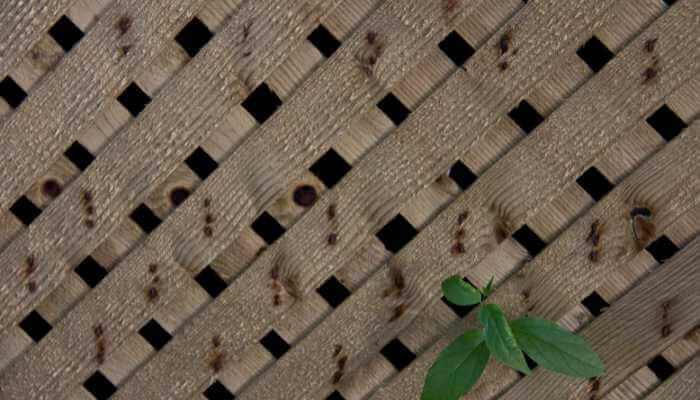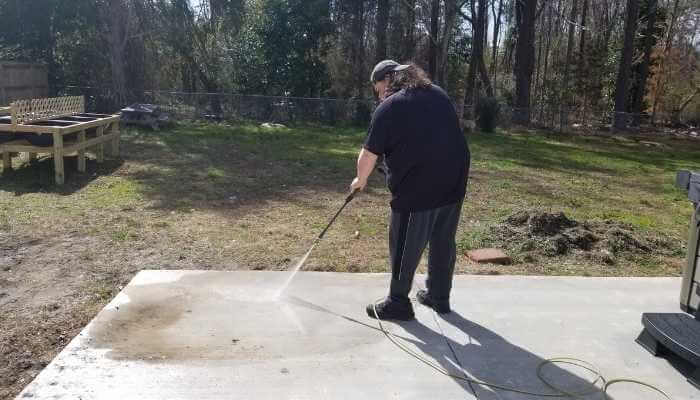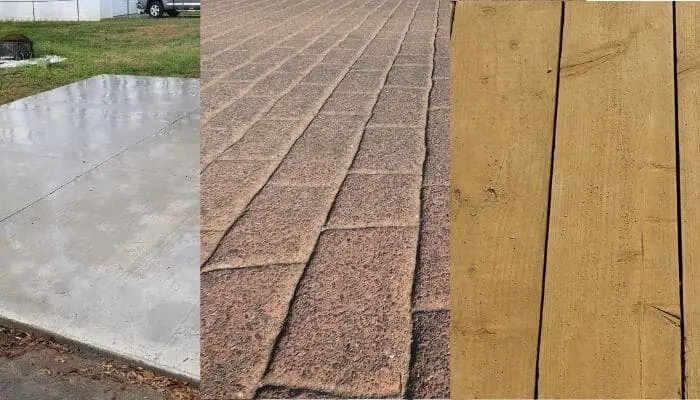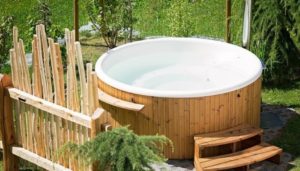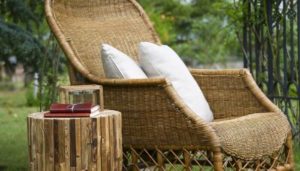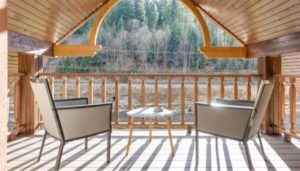Deck skirting can run on the expensive side, but you can save money if you are okay with repurposing things you already have available or just taking a DIY approach.
Some things you can use for deck skirting are premade deck skirting, lattice, vertical boards, or plants. You decide based on what you have available and what’s important to you.
If you’re wondering how to get skirting done without breaking the bank, just keep reading, and I’ll go over these options.
What Is Deck Skirting?
If you build a deck but don’t have anything blocking the lovely view of the deck’s unsightly piers, beams, joists, and base foundation, you may want some sort of deck skirting. Deck skirting is a material installed around the bottom of the deck from joist beams to the ground that conceals, beautifies, and can insulate. It can also keep animals out from under your deck.
Deck skirting is an affordable way to give your deck a finished look. It is easy to install and far cheaper than most wood. You don’t have to spend hundreds of dollars or kill yourself building something from scratch if you use the material that’s made for the job.
This product was made to provide a neatly finished appearance without the expense of other alternatives. It’s most commonly made of vinyl-colored plastic with a length that can be cut to any size desired. Deck Skirting comes in a variety of decorator colors and doesn’t cost much: $25 to $50 per linear foot of skirting.
But what if you want to use something else? What if you can’t afford the skirting, but you might have access to other things? Let’s go down my listing of cool ideas for deck skirting.
The Most Used Material for Deck Skirting Is Lattice
Deck skirting can also be used as a decorative feature, especially if you use lattice. It can be painted or stained in any color you want. You can also plant some running flowers near the lattice, and they will grow up on the lattice with some encouragement. Generally speaking, the lattice will make your deck look more upscale and finished than just plain old planks of wood.
Lattice comes in wood and plastic versions. The plastic will obviously last much longer, though it sometimes doesn’t hold paint as well. Lattice is cheap and easy on your wallet. A standard 4ftx8ft panel will cost you around $30. Because the lattice is made of thin wood, you don’t need special tools or skills; just some basic hand tools like a hammer and screwdriver will do the job.
You will need plenty of space around your deck for installing the lattice because it comes in standard sheets. But those sheets are large. Also, you may need to trim some parts of the lattice so that it fits appropriately before mounting it onto your decking boards. That means you’ll also need a saw handy. Or you can also buy pre-fabricated lattice panels — including corner pieces — that are already cut to size.
Vertical Boards Make Great Deck Skirting If You Have Extra Wood Lying Around
Vertical boards make an excellent base for deck skirting. The only problem is that they don’t always match the length of your deck. If you are lucky, you have enough to go around the entire perimeter of your deck. If not, you can buy more, but that may be an expense you want to avoid incurring.
Again, with wood, you can paint or stain it any color you want. You also don’t necessarily have to have the boards cut perfectly. Some of the most interesting decks I’ve seen came with an almost art-deco style of wood deck skirting. The wood was cut in various shapes and painted either different shades of stain or different colors. If you have wood that is similar in size and you can make simple vertical slats, it can give your deck and home a more rustic aesthetic.
You’ll need a saw and some basic skills with the saw to accomplish this kind of deck skirting. You want the boards to fit close enough to keep out pests. You’ll want to also anchor them by digging a trench for the bottom and using screws or nails to attach them to the decking boards. Usually, when you’re using scrap wood to handle this, you’ll probably need various sizes of screws and nails as well.
Plants Can Be Used as Deck Skirting
Potted plants can also be a great way to inexpensively add color and beauty to your deck. You can use seeds you’ve previously harvested or buy new plants and seeds. Depending on what you’ve got around you available, you may have to buy plants and pots for this, which would be an expense. However, you can also find free containers everywhere, from trash piles to garage sales.
One thing about doing this is that potted plants may not offer the best barrier for keeping critters out from under your deck. If you plant them where there’s too much shade, they won’t grow as quickly or as thoroughly. Also, you need to water the plants regularly, which can be a hardship if you live in a hot climate. If you do not have time to water your plants, they will die and become unsightly. I would always try to have evergreens or plants like rosemary – evergreen and useful.
Placing and taking care of plants around your deck to act as deck skirting adds multi-functional curb appeal. Using a decorative screen or garden trellis is an easy way to hide ugly construction materials while using plants. And certain kinds of trellis frameworks will provide a barrier against animals. If you also want to get some privacy, you can extend the growing vines up and around the deck itself.
In Conclusion
Adding deck skirting is pretty easy, no matter which material you choose. Material is a large part of the cost, as deck skirting is not cheap. Fortunately, there are other material options that are just as good, if not better. Be creative, think “outside the box,” and tackle this job with ingenuity by not using the same old deck skirting material. Your wallet will thank you!
